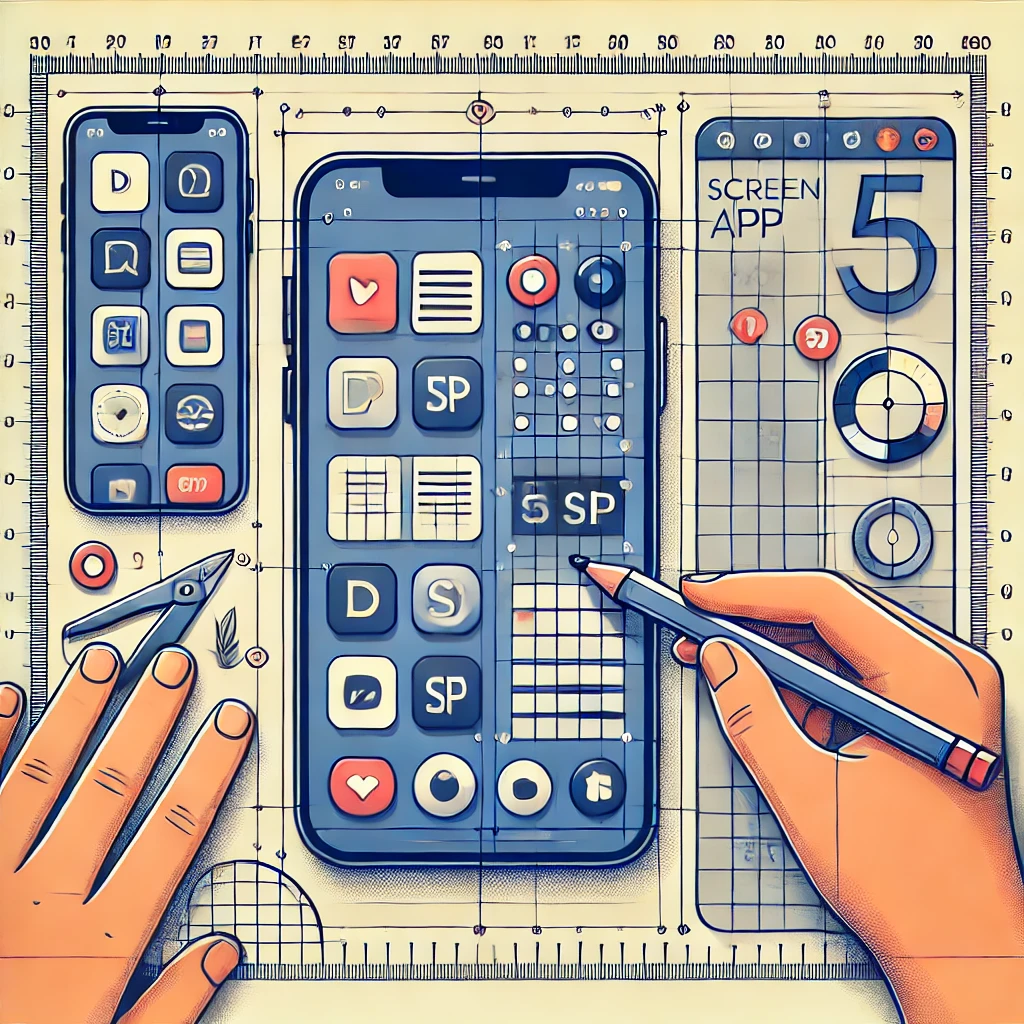In Android, dp (density-independent pixels) and sp (scale-independent pixels) are two units used to ensure that the UI design scales well across different screen sizes and densities. They help maintain a consistent and user-friendly appearance of elements on devices with varying screen resolutions and sizes.
1. What is dp (Density-Independent Pixel)?
dpis a unit that helps create a consistent size for UI elements across devices with different screen densities.- 1 dp is equivalent to 1 pixel on a 160 dpi screen (baseline density).
Why Use dp?
- Using
dpensures that your UI elements (e.g., buttons, margins, padding) appear the same size on screens with different densities (low, medium, high, etc.). - The system automatically scales the
dpvalue based on the screen density of the device.
Conversion Formula:
To convert dp to physical pixels:
pixels = dp * (dpi / 160)
For example:
- On a 160 dpi screen, 1 dp = 1 px.
- On a 320 dpi screen, 1 dp = 2 px.
- On a 480 dpi screen, 1 dp = 3 px.
Example:
<Button
android:layout_width="100dp"
android:layout_height="50dp"
android:text="Click Me" />
- This button will have the same visual size on all devices, regardless of their screen density.
2. What is sp (Scale-Independent Pixel)?
spis similar todp, but it also considers the user’s font size preferences (accessibility settings).- It is typically used for defining text sizes.
Why Use sp?
- Using
spensures that text scales appropriately for users who have changed their font size in device settings for better readability.
Example:
<TextView
android:layout_width="wrap_content"
android:layout_height="wrap_content"
android:text="Hello World"
android:textSize="16sp" />
- The text size will adjust based on both the screen density and the user’s font size preferences.
Key Differences Between dp and sp
| Aspect | dp (Density-Independent Pixel) | sp (Scale-Independent Pixel) |
|---|---|---|
| Use Case | For layout dimensions (e.g., margins, padding). | For text sizes. |
| Scaling | Scales based on screen density (dpi). | Scales based on screen density and user’s font size settings. |
| Accessibility | Does not account for font size preferences. | Accounts for font size preferences. |
When to Use dp vs sp
- Use
dp:- For all layout dimensions (e.g., height, width, margins, padding).
- For non-text elements like icons or shapes.
- Use
sp:- Exclusively for text sizes, to ensure readability for users who adjust font sizes in their device settings.
Practical Example
XML Layout Using dp and sp:
<LinearLayout
android:layout_width="match_parent"
android:layout_height="match_parent"
android:padding="16dp"
android:orientation="vertical">
<!-- Text with sp -->
<TextView
android:layout_width="wrap_content"
android:layout_height="wrap_content"
android:text="Hello, World!"
android:textSize="18sp" />
<!-- Button with dp -->
<Button
android:layout_width="200dp"
android:layout_height="50dp"
android:text="Click Me" />
</LinearLayout>
Screen Density Reference
Android categorizes devices by screen density:
| Density Category | dpi | Scale Factor (dp to px) |
|---|---|---|
| ldpi (low) | ~120 | 0.75 |
| mdpi (medium) | ~160 | 1.0 |
| hdpi (high) | ~240 | 1.5 |
| xhdpi (extra-high) | ~320 | 2.0 |
| xxhdpi (extra-extra-high) | ~480 | 3.0 |
| xxxhdpi (extra-extra-extra-high) | ~640 | 4.0 |
Key Takeaways
- dp ensures that UI components have consistent physical size across devices.
- sp ensures text remains readable, respecting user preferences for font size.
- Use dp for non-text elements and sp for text.
😊

Leave a Reply